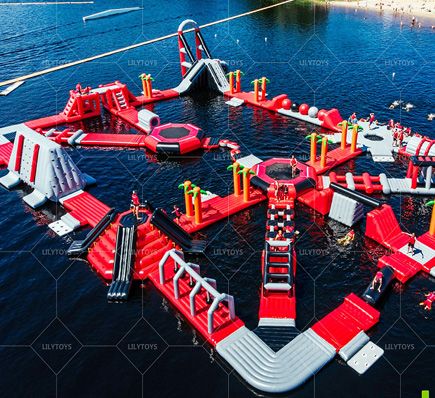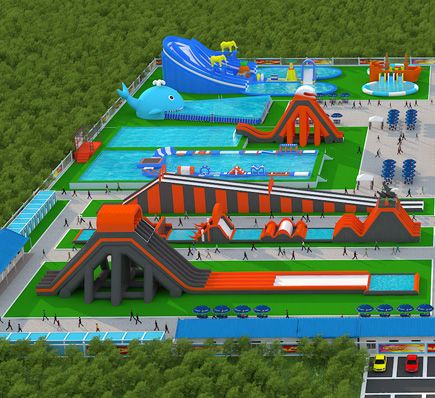This summer, inflatable water parks are showing up in more lakes, beaches and temporary event sites than ever — and not just as a novelty. Modular floating obstacle courses, inflatable slides and play islands have become a reliable way to turn ordinary waterfronts into attention-grabbing family attractions with relatively low setup cost and high visitor appeal. Industry reports point to strong market growth, driven by rising consumer demand for outdoor, experiential activities.

Why inflatable water parks are rising in popularity
Operators like pop-up event companies, resorts and municipal leisure departments are choosing inflatables because they’re flexible and scalable: parks can be small kids’ zones one weekend and extended obstacle courses the next. Many commercial operators highlight the relatively low capital needed to start and the ability to redeploy kit seasonally or between sites — a business model that suits today’s festival and experience-driven economy.
Safety and standards: non-negotiable
As the sector grows, regulators and industry bodies have been explicit: lifeguard supervision, daily inspections, clear capacity limits and secure anchoring are essential. Best practice documents and standards for commercial inflatable sites require trained lifeguards on duty, regular equipment checks and risk controls such as exclusion zones and age/weight limits. Operators must incorporate these measures into every opening checklist.
Materials, maintenance and longevity
Most commercial water inflatables are built from reinforced PVC (often with polyester webbing) or TPU laminates; these materials balance waterproofing, abrasion resistance and cost. Whatever the fabric, routine cleaning, patching small punctures quickly and avoiding harsh chemicals will extend service life — and proper storage through the off-season prevents UV and mildew damage. Choosing the right material and a documented maintenance plan helps parks stay safe and profitable.
Operational best practices for reliable guest experiences
Experienced operators follow a short, repeatable protocol each day: anchor and tension checks, visual seam inspections, lifeguard briefings with rotation schedules, strict capacity counts and clearly posted rules. Insurance and risk-management providers also recommend limiting session lengths, securing a perimeter around floating parks, and using spotters in addition to lifeguards for high-traffic features. These controls reduce incidents and improve guest confidence.
The environmental and community angle
Operators are increasingly aware of environmental impact — from the fuel used by support boats to waste and shoreline wear. Good practice includes choosing quieter, more efficient support craft, enforcing leave-no-trace rules for guests, and coordinating with local authorities so events fit with water-use plans. When done responsibly, inflatable parks can bring tourism and family-friendly recreation without permanent shoreline construction.
What to expect next
Look for larger, record-scale floating parks at tourist destinations, more mobile “pop-up” parks that travel between lakes and beaches, and product improvements (lightweight TPU blends, faster inflation systems and modular connectors that speed reconfiguration). For communities and operators, the message is clear: with proper safety systems and environmental care, inflatable water parks offer a flexible, in-demand way to activate waterfronts.





